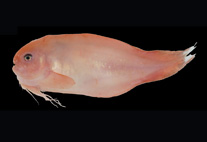Abstract
The Andean Leaf-eared mouse, Phyllotis andium Thomas 1912, has been considered a widespread medium-size sigmodontine rodent (230 mm of total length and 35 grams approximately) that occurs from Tungurahua, Ecuador, through the Andes, to Lima, Peru. Previous studies performed on Phyllotis noted evidence of morphological geographical variation within the species, which is likely because of the several potential geographical barriers that exist within the distribution range of P. andium. We carried out a taxonomic revision of this species based on qualitative and quantitative morphological analyses of 330 specimens from 92 localities. This included appropriate comparisons with other species of the andium/amicus group and performed molecular analysis based on cytochrome b sequences. As a result, morphologic qualitative analysis suggested the recognition of three different taxa, which are supported by morphologic quantitative and molecular analyses. The three taxa here identified have allopatric distributional ranges separated by important geographic barriers. Following these identification criteria, P. andium is now recognized for the samples from Tungurahua, Ecuador to Huánuco, Peru, and includes melanius and fruticicolus as synonymous; the southern populations from the Ancash and Lima departments, in the western Peruvian Andes, are proposed to represent a new species; and we recognize P. stenops as a valid species with tamborum as a synonym. Finally, we postulate that the diversification of these three species is related to key events in the Andean orogeny.

